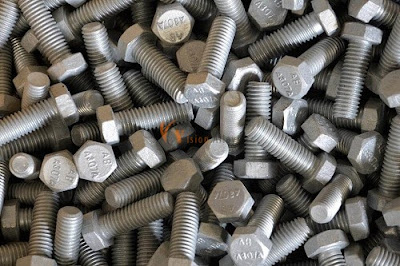Stainless Steel Fasteners
Stainless Steel Fasteners
Among austenitic Stainless steel 316 fasteners is the standard molybdenum-bearing grade and is second only to grade 304 in significance. In general, Grade 316 Stainless Steel Fasteners have stronger corrosion resistance than SS 304 Fasteners thanks to the molybdenum, and it is especially resistant to pitting and crevice corrosion in chloride conditions. Excellent forming and welding properties are present. It is easily shaped into various elements for use in the transportation, architectural, and industrial sectors. Additionally, grade 316 offers excellent weldability qualities. When welding narrow parts, post-weld annealing is not necessary.
The low-carbon variant of grade 316L is resistant to sensitization (grain boundary carbide precipitation). As a result, heavy gauge welded components frequently employ it (over about 6mm). High temperatures can be used for grade 316H, which has a larger carbon content and stabilised grade 316Ti.
These grades have high toughness, even at cryogenic temperatures, thanks to the austenitic structure. In ASTM A240/A240M, these characteristics are defined for flat-rolled products (plates, sheets, and coils). Other goods like pipes and bars have requirements that call for similar but not necessarily equal qualities.
Corrosion Resistance
Excellent in numerous corrosive media and various climatic conditions; typically more resistant than 304 Stainless Steel Fasteners. In warm chloride settings, subject to pitting and crevice corrosion, and to stress corrosion cracking above around 60 °C. Potable water is thought to be resistant to chlorides up to about 1000 mg/L at room temperature, which drops to around 500 mg/L at 60 °C.
Although 316 Stainless Steel Fasteners is frequently referred to as the industry standard for "marine grade stainless steel," it is not heat resistant. 316 does experience surface corrosion in various maritime settings, which is often seen as a brown discoloration. This is especially related to crevices and an uneven surface finish.
Heat Resistance
Excellent oxidation resistance in continuous use at 925 °C and in intermittent service at 870 °C. If aqueous corrosion resistance is crucial, it is not advised to use 316 continuously in the 425-860 °C range. Grade 316L may be utilised in the aforementioned temperature range and is more resistant to carbide precipitation. At temperatures over around 500 °C, grade 316H is occasionally utilised for structural and pressure-containing applications due to its increased strength at these temperatures.
Welding
Excellent weldability with or without filler metals using all common fusion techniques. Welding of 316 using Grade 316 and 316L with Grade 316L rods or electrodes is pre-qualified by AS 1554.6. (or their high silicon equivalents). Heavy welded sections made of Grade 316 need to be post-annealed to get the highest level of corrosion resistance. For 316L, this is not necessary. For heavy section welding, grade 316Ti can also be utilised as a substitute for grade 316.
The "Dual Certified" type of SS 316 and SS 316L fasteners is often available; it is mostly found in plates and pipe. These products meet both 316 and 316L requirements regarding their chemical and mechanical qualities. Such a dual-certified product could not be suitable for high-temperature applications since it does not fulfil 316H specifications.
If you are looking for the best quality Stainless Steel Fasteners than contact us. We are also manufacturers of Stainless Steel 18-8 Fasteners. For more info, Click here.




.png)
Comments
Post a Comment